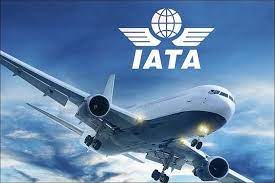The International Air Transport Association (IATA) unveiled a series of roadmaps aimed at providing step-by-step detailing of critical actions and dependencies for aviation to achieve net zero carbon emissions by 2050.
These roadmaps address aircraft technology, energy infrastructure, operations, finance, and policy considerations leading to net zero.
Aircraft Technology: The development of more efficient aircraft and engines is key. Particularly important are the steps needed to enable aircraft powered by 100 per cent sustainable aviation fuel (SAF), hydrogen or batteries. All development milestones are backed up by announced investment and demonstrator programs. Also included are new engines, aerodynamics, aircraft structures, and flight systems.
Energy and new fuels infrastructure: The focus is on the fuels and new energy carrier infrastructure upstream from airports is needed to facilitate the use of aircraft powered by SAF or hydrogen. Renewable energy plays a vital role in meeting the aviation sector’s energy demand, and the roadmap outlines milestones to enable the necessary infrastructure developments.
Operations: The opportunities for reducing emissions and improving energy efficiency by improving the way existing aircraft are operated. Automation, big data management, and the integration of new technologies are key enablers for optimizing air traffic management and enhancing the overall efficiency of the air transportation system.
Policy: There is a need for globally aligned strategic policies to provide incentives and support for the aviation industry’s transition to a net-zero future. For all other successful energy transitions, the collaboration between governments and industry stakeholders is crucial in creating the necessary framework to achieve the decarbonization goals.
Finance: There should be a focus on how to finance the cumulative $5 trillion needed for aviation to achieve net zero by 2050. This includes technological advancements, infrastructure developments, and operational improvements.
The challenges to ramp up SAF production are a good illustration of the importance of these roadmaps. As a drop-in solution, SAF is expected to deliver about 62 per cent of carbon mitigation needed to achieve net zero by 2050. But even though SAF is expected to be fully implementable with future aircraft fleet, it still has major inter-dependencies on policy, aircraft technology, energy infrastructure, financing, and operations for which these roadmaps are critical.
“The roadmaps show where all stakeholders should focus their efforts. There are two certainties. By 2050 we need to be at net zero carbon emissions. And the steps to get there that are outlined in these roadmaps will evolve as the industry’s expertise grows. The policy is particularly important early on as it, to a large extent, sets the scene for private sector investors to move. With that, the private sector can decarbonize at scale and with speed,” Marie Owens Thomsen, SVP Sustainability and Chief Economist at IATA said.










